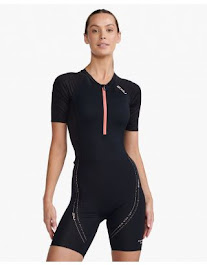The difference between a swimming wetsuit and a surfing wetsuit
Australia is perfect for surfing and ocean swimming alike. From the long beaches of Byron Bay to the renowned swim spot surfers paradise, there are waves out there for all of us. However, the water is sometimes extremely cold so the wetsuit must give warmth to the body. But wetsuits are created for swimming or surfing but not both. Below we are explaining the differences between swimming wetsuits and surfing wetsuits.
Thickness
A wetsuit is necessary when swimming and sitting on a board in cold water. Surfing wetsuits keep surfers warm by using various material thicknesses for adequate water temperatures. Open water swimmers don't have to think as much about the temperature because they are constantly moving and have high body temperatures. Multiple panels with different thicknesses are what makes swimming wetsuits different from other wetsuits. Armpit layers on swimming wetsuits are thin that allow for continuous rotation. Since athletes have to remove wetsuits quickly during transitions so sleeves and cuffs of the arms and legs are designed in that way in swimming wetsuits.
Speed
Speed is crucial when swimming in open water, and swimming wetsuits are made for the best hydrodynamics. Thicker neoprene across the hips in swimming wetsuits allows the body to bounce higher in the water, which reduces drag. Swimming wetsuits usually use smooth skin material, which has a much smoother finish than the thicker neoprene used in wetsuits, to reduce drag. Swimming wetsuits are not suitable to wear while surfing because they don't allow for a wide posture as is required on surfboards.
Styles
Surfing wetsuits come in a wide range of styles, from full length to vests, to meet swings in water temperature. Full suits or sleeveless swimming wetsuits are common, again to help in balancing and minimize drag. Surfing Wetsuits aren't only for use in the oceans. We recommend you try a triathlon wetsuit for men if you want to stay warm in a pool for swimming or water aerobics. Warning: While rashguards are great for surfing, they aren't necessarily a good choice for swimming. A tight-fitting rashguard will prevent chafing when you swim for a long period of time.
Neckline
The neckline on a surf suit is generally a lot higher to protect you from various things. On a swimming focused wetsuit, they are a lot lower. While swimming, you are constantly moving your head to breathe so the lower neckline is appropriate for you.
Warning: with a lower neckline wetsuit, especially in salt water, you can get a nasty rub.
Important points to consider
- Always keep the comfort and perfect fit first while buying any wetsuit as your performance may highly influence by your discomfort.
- Always try and then buy
- Invest wisely and smartly
- Different companies have different types of fit so always use their size guide for a better understanding
Check Trishack to find out about an amazing swimming wetsuit worth investing in.
Visit Website.



Comments
Post a Comment